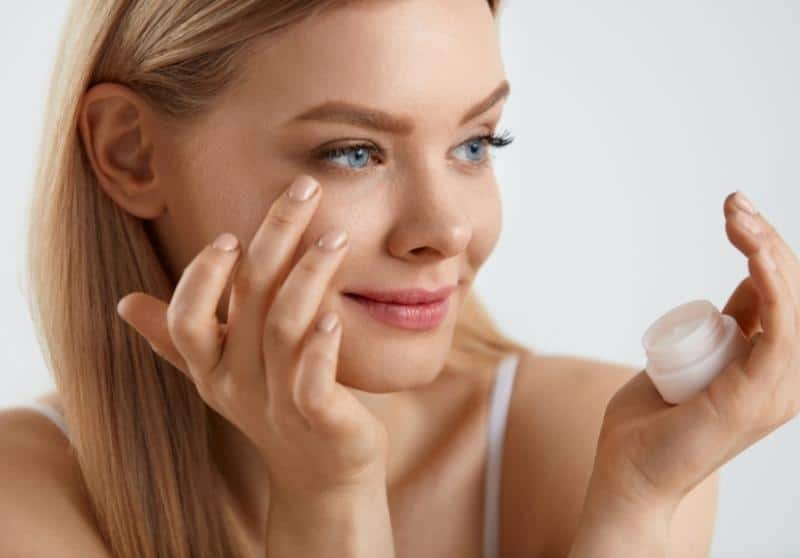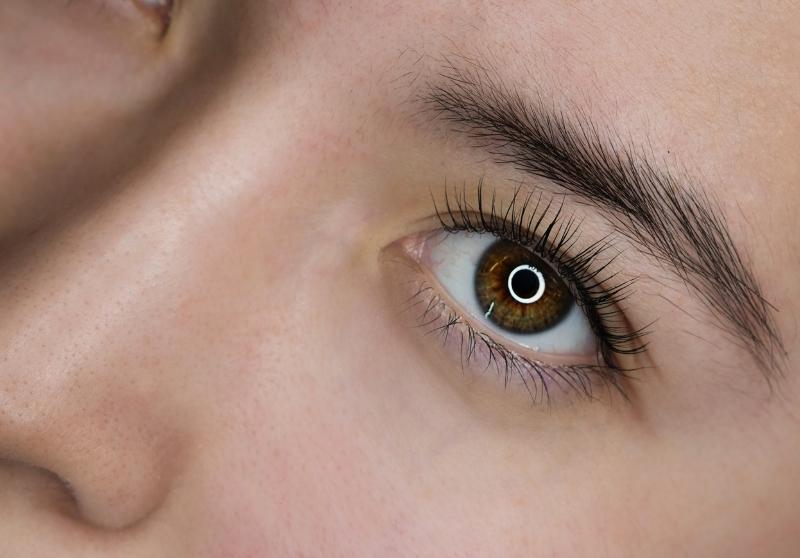Lash lifts are becoming an increasingly popular way of elevating your natural eyelashes but there are certain things you need to consider before going in for one. For example, can you get a lash lift with a stye?

If you have a stye, you cannot get a lash lift, and you shouldn’t go in for any other lash-related appointment, either. You need to wait for the stye to completely clear before seeing your lash technician.
What Is A Lash Lift?
Whilst lash lifts aren’t the same as eyelash extensions, they’re still a fantastic, low-maintenance way of working with your natural lashes to add a little curl.
With extensions, individual lashes are applied via a special adhesive onto your natural lashes.
This gives you extra length and volume and can make your look intensely dramatic and dynamic.
Lash lifts work with your natural eyelashes – no extra lashes are added.
It’s a chemical treatment somewhat like a perm that will curl your natural lashes to make them appear longer and fuller.
A lash lift is, therefore, less intense than eyelash extensions, but both will elevate your lash look.
If you look after your lash lift properly, it should last anywhere from a month to six weeks. Eyelash extensions tend to only last for a month and will need more maintenance.
If you have particularly thin or short eyelashes, an eyelash extension is probably more ideal than a lash lift, which only works with the lashes you already have.
However, if you’re looking for a more natural look and for a treatment that doesn’t involve glue, then a lash lift is more likely to suit you. It’s all about the look that you’re going for.
Benefits Of A Lash Lift

1. Saves you time
If you want to save valuable time in the mornings, a lash lift can add a curl to your natural lashes that you’d otherwise only get via mascara.
Not having to apply makeup in the mornings gives you more time to catch that beauty sleep.
2. Elevates your natural look
Maybe you love your natural lashes, but wish they looked just that little bit fuller, and aren’t keen for a more dramatic look.
A lash lift works with the lashes you have and is, therefore, more natural looking than eyelash extensions. It’s therefore an ideal procedure for people who are after just a splash more drama.
3. Less need for makeup
If you’ve had a lash lift, you’re far less likely to need to apply makeup so consistently.
After all, you paid for the treatment, so why would you want to cover up your newly curled lashes?
You may consequently find yourself spending less money on makeup like mascara or eyeliner, and not having to worry about removing it at the end of the day.
4. Low maintenance
Compared to the upkeep required for eyelash extensions, a lash lift is a relatively low maintenance procedure.
You need to ensure that you take care of your lashes so as to prolong the lift for as long as possible, but you won’t need to head in for a touch-up as frequently as you would with eyelash extensions.
Can You Get A Lash Lift With A Stye?

You should not go in for a lash lift appointment if you have a stye. You also need to avoid any other eyelash appointment.
It’s best to wait for at least 72 hours until after your stye has disappeared so that any swelling or sensitivity has entirely disappeared.
Wondering what a stye is? A stye occurs when the sebaceous glands on the edge of your eyelids become inflamed.
This is usually caused by a bacterial infection. They may look like a slightly swollen, red bump, but they can even look like a pus-filled whitehead.
Styes can form on both the inside or outside of the eyelid, and are caused when your gland becomes blocked.
Styes can be caused by a number of things, including:
- Leaving your eye makeup on overnight
- Touching your eyes without first washing your hands
- Using old eye makeup
- Putting in contact lenses without either washing your hands or disinfecting your lenses first
Styes should disappear within a few days of appearing. To treat them, you can:
- Use mild soap or shampoo (like baby shampoo) and water to keep your eyelids clean
- Use a warm compress or a warm teabag on the impacted area for a few minutes a day – this will help the area to open up
- If the stye is painful, you can take painkillers such as ibuprofen
You should also avoid mascara as well as your contact lenses.
If your stye does not disappear within 48 hours, you need to head to your physician. In cases of severe infection, you might require antibiotics to clear the stye.
Who Should Not Get A Lash Lift
Lash lifts are generally considered relatively risk-free procedures. They are certainly less invasive than eyelash extensions, which involve the application of adhesive around your eyes.
However, there are a number of things to consider before you get a lash lift:
1. If you are prone to allergies or sensitivities
If you have particularly sensitive skin or eyes and are prone to eye infections, then you may want to reconsider having a lash lift.
For example, if you experience migraine headaches or swelling, you are more likely to have eye hypersensitivity and may want to avoid a lash lift.
Similarly, if you experience dry eyes frequently, or are prone to your eyes watering, then a lash lift may not be the procedure for you, as it could exacerbate these issues.
2. If you have weak eyelashes
It may sound crazy, but some people do have weaker eyelashes. This can be caused by repeated infections, a vitamin E deficiency, or even thyroid imbalances.
If you are in menopause, this can also cause thinning eyelashes as a result of hormonal changes.
If your lashes are naturally weaker and you’re prone to frequent lash fall, it’s best to avoid a lash lift.
3. If you have had eye surgery
If you have had any kind of eye surgery, from laser eye surgery through to lid lifts, then you should wait at least a year before undergoing any kind of cosmetic lash treatment.
You need to take care that your eyes and eye area are entirely healed, and a lash lift may cause disruption to this healing process.
4. If you experience infections around your eye and skin area
Blepharitis is a condition where the eyelid is inflamed, often resulting in crusty eyes, peeling skin, and redness or irritation.
There are a number of factors that can cause this, including infection, clogged oil glands, allergies, and even eyelash mites.
If you have blepharitis, then you should not undergo a lash lift.
A technician is unlikely to take you anyway, and it would be best to consult with your physician for how to treat the problem.
Even if you are not prone to eye infections, a lash lift might activate one.
Bacteria could become trapped along your upper lash lid as a result of the procedure, which might cause swelling and redness as a result.
Similarly, if you have skin disorders that present around your eye area – for example, if you have eyelid dermatitis, eczema, or psoriasis, then you should avoid getting a lash lift.
You should also consult with your physician to receive proper medical treatment.
Other Reasons To Avoid Lash Lifts
If you don’t experience any of the above issues, then a lash lift may be a suitable procedure for you.
However, it’s still a good idea to consider the following:
Skin irritation
You need to ensure that you’re seeing a professional aesthetician for your lash lift. During the procedure, protective pads are placed underneath your eyes so as to avoid any irritation of the skin.
However, you may still experience some skin irritation and sensitivities, including redness, inflammation, or a rash.
It’s important to undergo a patch test prior to your appointment in order to ascertain whether you might experience this.
Use of chemicals around your eyes
It’s worth taking the time to ensure that any chemicals being used near your eyes are approved for use around that area.
The main ingredient of most solutions for lash lifts is ammonium.
This can be toxic to the cornea and conjunctiva of the eye and might be responsible for extreme irritation and sensitivities around the eye area.
Should any solution enter your eye itself, you might develop a corneal ulcer or chemical burn.
You would need to seek the immediate assistance of your physician if this occurs.
The experience of dry eyes
Even if you are not prone to dry eyes normally, many people report experiencing dry eyes after a lash lift procedure.
If you don’t experience dry eyes, you may nonetheless experience red eyes, burning lids, or puffiness.
You can’t get extensions
If you undergo a lash lift and then decide that you actually want a more dramatic look, you can’t get an eyelash extension whilst you have lash lift chemicals.
You’ll need to wait for the lash lift chemicals to disintegrate (anywhere from four to six weeks) before going in for an eyelash extension appointment.
